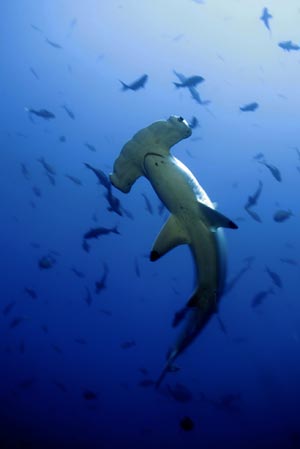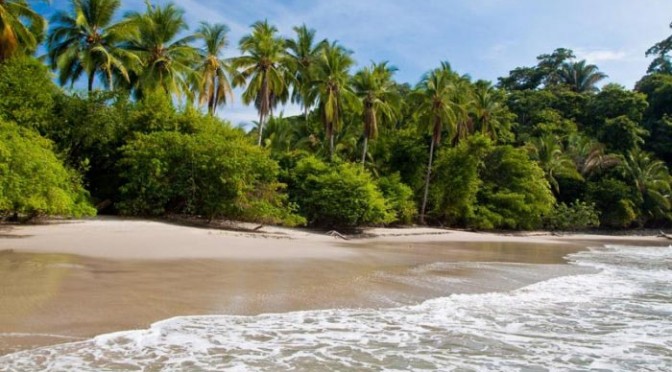During a volcanic upheaval about two and a half million years ago, Cocos Island was formed. This marvelous island is positioned 300 miles (480 km) to the southwest of the Osa Peninsula. This island is the ideal location for exploring the beauty of the ocean below.
Cocos Island is a rugged yet incredibly verdant island which is a part of the same chain of volcanoes, most of which are still underwater for example the Galapagos. A single hot-spot pushed up volcanic material from deep below the Earth’s crust by which the total chain of volcanoes formed. In 1526 Juan Cabezas discovered this island and later the home to unruly prisoners also find out the island in the late 19th century. The outer edge of the Cocos island is surrounded by Steep cliffs (some of which are about 300 feet high and have waterfalls bursting onto the sandy shore) which makes it possible to safe entrance at Chatham Bay or Bahia Chatham.
Biodiversity:
 Cocos Island is the home to many species of birds including Holy Spirit bird or, Espíritu Santu, a white-colored bird resembling a dove . Three of those species birds are endemic to Coco Island—the Cocos Island cuckoo, Cocos Island finch and the Cocos flycatcher. Not only the birds, there are also a plant species-the Franklin Roosevelt, named after the former US president who visited the island, can be seen in this island. Three are also living species of bodies-the brown, masked and red-footed which dwell in this prime habitat and 362 species of insects also can be found in this island. 70 of the 235 identified vascular plant species in the world, some 25 species of moss, 27 species of live wort and 85 species of fungus are also found in this island. At least 27 endemic fish species including the exotic rosy-lipped batfish also found in this island.
Cocos Island is the home to many species of birds including Holy Spirit bird or, Espíritu Santu, a white-colored bird resembling a dove . Three of those species birds are endemic to Coco Island—the Cocos Island cuckoo, Cocos Island finch and the Cocos flycatcher. Not only the birds, there are also a plant species-the Franklin Roosevelt, named after the former US president who visited the island, can be seen in this island. Three are also living species of bodies-the brown, masked and red-footed which dwell in this prime habitat and 362 species of insects also can be found in this island. 70 of the 235 identified vascular plant species in the world, some 25 species of moss, 27 species of live wort and 85 species of fungus are also found in this island. At least 27 endemic fish species including the exotic rosy-lipped batfish also found in this island.
Climate:
In Cocos Island per year average rainfall is 25 feet, resulting in a covering of lush green foliage. There are many waterfalls of which there are up to 70 falls of varying sizes during the peak of the rainy season. Due to the heavy rainfall, Cocos island is also prone to frequent landslides.
How to reach the island:
One can go to the Cocos Island by boat or sea-plane from various destinations on the Osa Peninsula. There are limited ways to be able to step foot on the island but one of the best ways to explore the natural beauty of this island is through a dive trip. As the currents of the island keep changing and drop-offs are severe, only experienced divers should visit the island and also should check with local authorities for current condition. Tourists can visit the island by taking permission of island rangers.

